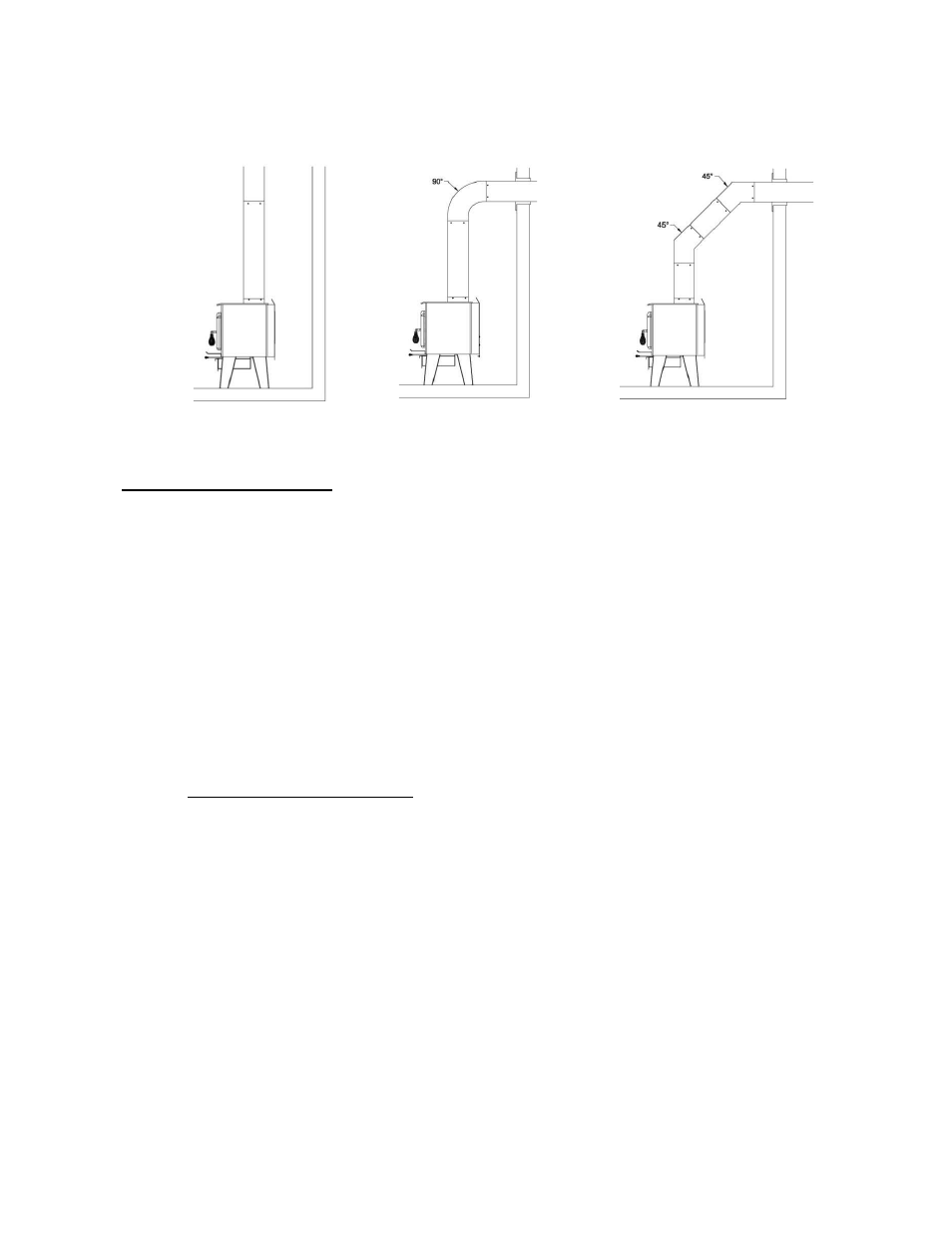Osburn OB01111 User Manual
Page 19

19
•
The assembly should be as short and direct as possible between the stove and
chimney (See figure 2.4 (A)). The use of two 45 degree elbows (See figure 2.4 (C)) is
often preferable to a single 90 degree elbow (See figure 2.4 (B)) because less
turbulence is created in the exhaust flow and they result in less horizontal run.
(A)
(B)
(C)
FIGURE 2.4 The use of elbows
CHIMNEY SYSTEMS
The minimum chimney size is 6" (152 mm) in diameter. The minimum overall height of the
chimney system, measured from the base of the appliance is 12' (3.66m). Existing masonry
and metal chimneys should be inspected to check for deterioration and to determine if they
meet the minimum installation requirements; they should be upgraded if necessary. In
Canada, masonry chimneys must have or use a ULC S635 listed Class III liner in chimney
systems that are not ULC S629 listed. Similarly in the USA a UL 1777 listed refractory or
metallic liner must be used. At the point of penetration through the roof to the outside of the
building envelope, the chimney must extend at least 3' (914 mm) above the roof and at least
2' (610 mm) above the highest point within an area of 10' (3 m) of the chimney (see Figure
1.6).
Follow CSA Standard B365-M91 for methods and precautions to be employed when
connecting the stove to a masonry chimney, and for installing thimbles (wall penetration
assemblies) when the connection from the stove to the masonry chimney is made through a
combustible wall.
When connecting to a factory built chimney, ensure that it is installed according to the
manufacturer's listed instructions. If using an existing chimney, inspect and clean the chimney
if required (this should be done by a licensed chimney sweep or a qualified professional).
